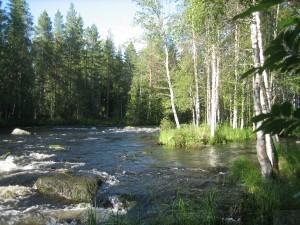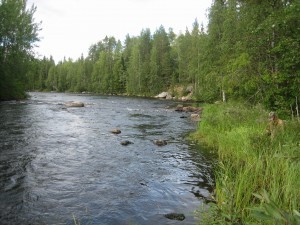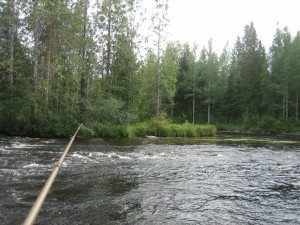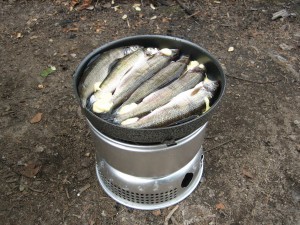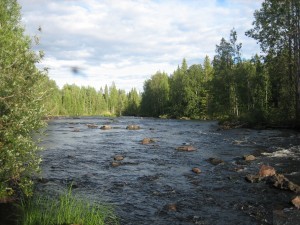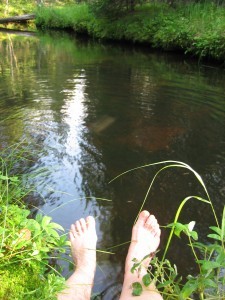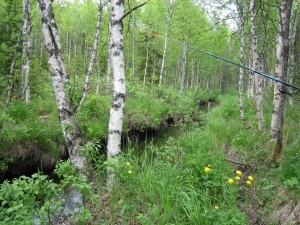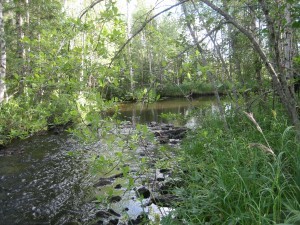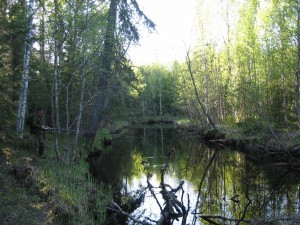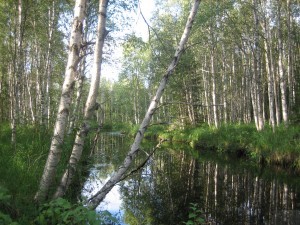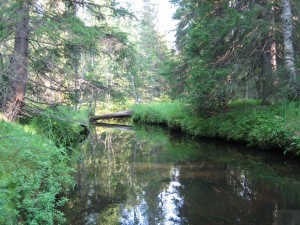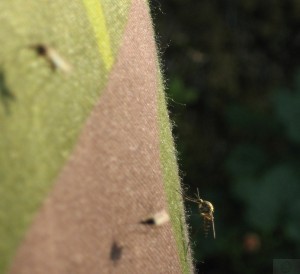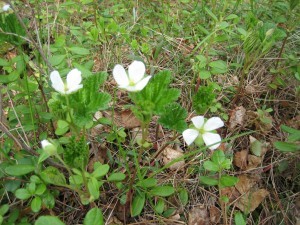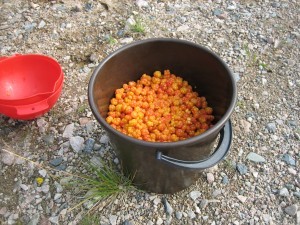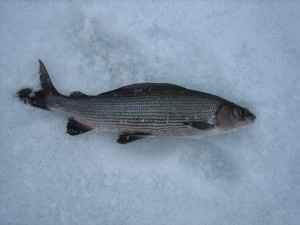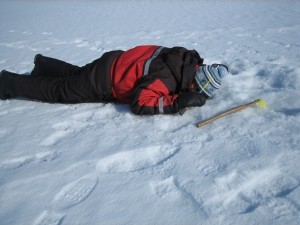Did you think I am not fishing this time of the year? Actually, this year I am not summer fishing in Lapland, but I want to tell you about earlier years as I have fished in Lapland in the beginning of summer. In Lapland there are a lot of small rivers and really tiny rivers in the wilderness, not much bigger than a ditch, where there is a lot of fish.
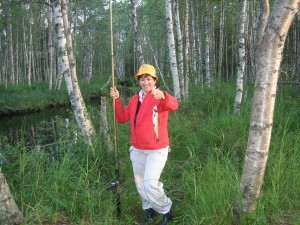 You can get greyling (harjus) from the rivers near the rapids also in summer, not only when ice-fishing. In summer you catch greylings standing on the shore of the rapids or you could stand in the rapid yourself, if you want. I never did that, though.
You can get greyling (harjus) from the rivers near the rapids also in summer, not only when ice-fishing. In summer you catch greylings standing on the shore of the rapids or you could stand in the rapid yourself, if you want. I never did that, though.
If you are out camping you can fry your catches on a trangia spiritburner right away. Delicious!
Another peculiar fish in the tiny rivers is the little brown trout or river trout (tammukka, purotaimen) as it is also called.
The river trout is related to the common trout, but it does not really grow big. The river trout stays in the river where it was born. Normally trouts migrate from the birth place to bigger rivers and rapids and at times they grow really big; they could even be about 15 kg. But the trouts that stay in the little river where they were born never grow big, to not even 1 kg. The river trout is found all over Finland but specially in Lapland it is really small; about 25 cm. The government of Finland has decided the minimum of all fish you are allowed to catch, and the minimum length they have put on a river trout is 40 cm, but the fact is, they never grow that big in Lapland! So you could say the river trout every little boy in Lapland uses to catch does not even exist in the eyes of the government. Read more about fishing licenses and restrictions here.
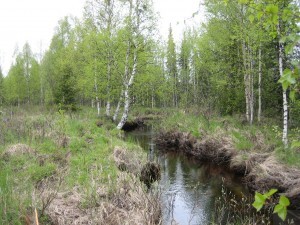
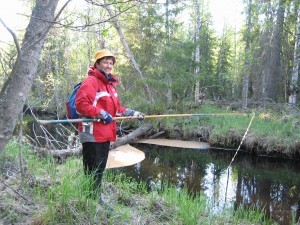 Even small children can go angling river trouts in the small rivers. It is easy to catch, But one thing is important; you should keep quiet when angling! The river trout does not like voices and noise. It is easily frightened away. You should sneak quietly into your place on the shore before you start angling.
Even small children can go angling river trouts in the small rivers. It is easy to catch, But one thing is important; you should keep quiet when angling! The river trout does not like voices and noise. It is easily frightened away. You should sneak quietly into your place on the shore before you start angling.
I love to walk along these small rivers in the absolute wilderness. The forest is so quiet around you. Sometimes you meet some reindeer and sometimes a beaver. I have also seen poo-poos of bears, but I never saw a bear, luckily. Even if I am very keen on fishing I also often just admire the nature and try to enjoy every minute of my stay in the wilderness. A foot bath in the ice-cold, clear river-water is a lovely experience after a long walk into the wilderness and refreshes your feet .
Enjoy these photos of the wilderness of Lapland!
In Lapland during summer season the main trouble is the mosquitoes. You should never forget to put on some insect repellent when going angling by the river. The mosquitoes could ruin the pleasure about angling for you.
The time to catch river trouts is at its best in early summer. At the same time the cloud berries are blooming and every Laplander hopes for no night frost or hailstorm that could spoil the opportunities to enjoy a perfect cloud berry crop later in the summer.

